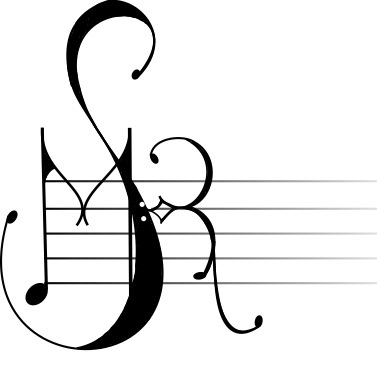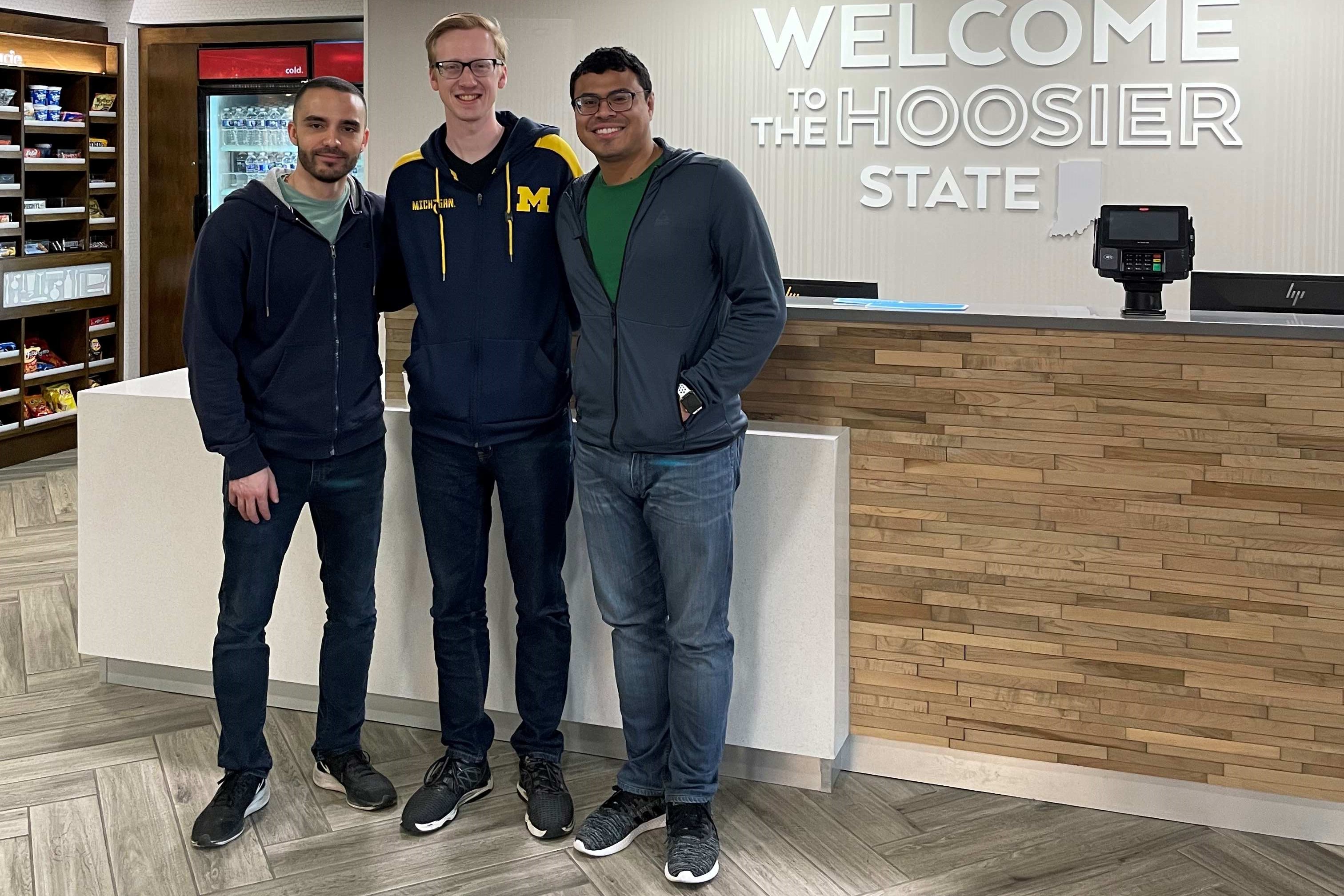SMR members Carlos Pérez Tabares, Micah Mooney, and Luis Armando Rivera attended the Music Theory Midwest conference at Ball State University in Muncie, IN from May 10–11, along with other faculty members from the SMTD music theory department. Micah and Carlos presented their papers on Friday, May 10, titled “‘He Had a Way With Words/And a Rhythm and a Rhyme’: (Slant) Rhyme and Reason in Contemporary Musical Theater Lyrics” and “Lyric Forms as Drama: Integration of Formal Functions and Text Organization in Primo Ottocento Opera,” respectively. See photos and abstracts below.
Photos: Click to enlarge and view captions…
“He Had a Way With Words/And a Rhythm and a Rhyme”: (Slant) Rhyme and Reason in Contemporary Musical Theater Lyrics
Micah Mooney
Recent studies on rhyme in musical theater repertoire (e.g. Plotkin 2023) only include perfect rhyme within their scopes. This is understandable as perfect rhyme is normative in musicals, in part due to the writings and practice of Stephen Sondheim. However, several recent musicals suggest that the appearance of imperfect rhymes is an intentional and expressive decision. This paper proposes a theoretical framework to account for the motivations behind these deliberate uses of imperfect rhyme.
When discussing word choice in lyric writing, a binary categorization of “rhymes”/“does not rhyme” is too limiting since imperfect rhymes do appear in the repertoire—e.g. Anaïs Mitchell’s Hadestown (2019). Approaches, such as Plotkin’s, which exclude imperfect rhymes are unable to account for these satisfying uses of imperfect rhyme.
By borrowing phonological notation from linguistics, I first show how imperfect rhymes can exist on a spectrum of “perfectness.” Whereas Plotkin’s phenomenological approach considers preferences for where a rhyme will occur, I suggest a linguistic approach to consider preferences for how it will occur.
I then argue that a lyricist’s approach to imperfect rhyme depends on their expressive priorities. My framework organizes these potential priorities on a spectrum from sound-based to meaning-based, inspired by the primary sub-fields of linguistics. This model can explain why Mitchell, who frequently prioritizes nuanced meaning, will be quicker to abandon the perfect rhyme than Sondheim, who tends towards the sound-based features. I then use this model to analyze the contrasting lyrical tendencies in other Tony Award winning shows from the 2010s.
Lyric Forms as Drama: Integration of Formal Functions and Text Organization in Primo Ottocento Opera
Carlos A. Pérez Tabares
Since Lippmann’s (1969) seminal study on Bellinian melodies, most theoretical discussion on lyric form—a sixteen-bar structure found in bel canto opera— suffers from two limitations. First, by adhering to alphanumeric formulations (e.g., AABA, AABC) and rigid theoretical yardsticks, scholars have pathologized many melodies that, I argue, still operate within the norm. Second, other than to explicate misbehaving examples, the relationship that binds textual and musical forms has not been as widely acknowledged as it should. Building on a line of research explored by Moreen (1975), Pagannone (1996), and Hepokoski (1997), I propose that, in primo ottocento opera, text organization determines the form of its musical setting. I suggest that the semantic and syntactic structures of operatic poetry in closed forms are paired with analogous formal functions in their musical realization. This results in the thematic types that Caplin (1998) calls small binary, small ternary, and sixteen-measure sentences, as well as minuet forms. By correlating text organization and musical structure, I present the lyric form as a set of dramatically motivated conventions for music and text. By incorporating Caplin’s definitions of formal functions, I unmark pieces whose structure scholars have described as unusual. This economy of forms allows us to focus on other important aspects of these themes, like their nuanced elements of musical expressivity and the specifically Italian contributions that, as Lawrence (2020) suggests, would help us “properly understand the formal structures of … Chopin, Wagner, or Liszt.”
Recent Posts
SMR to Host Midwest Graduate Music Consortium 2025 Conference – January 13, 2025
SMR Welcome BBQ at County Farm Park – October 01, 2024
Julian Grey defends dissertation – June 05, 2024
Michaela Franzen defends dissertation – May 21, 2024
Kai West defends dissertation – May 16, 2024
Micah Mooney and Carlos Pérez Tabares present at Music Theory Midwest – May 12, 2024
SMR end-of-year round-up at County Farm Park – April 25, 2024
SMR hosts Research Showcase – September 29, 2023
 Society for Music Research
Society for Music Research

